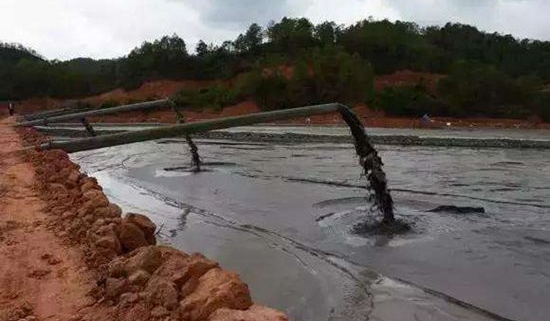1. Mineral processing wastewater
The ore dressing wastewater has the characteristics of large water volume, high suspended solid content and many types of harmful substances. Its harmful substances are heavy metal ions and mineral processing chemicals. Heavy metal ions include copper, zinc, lead, nickel, antimony, cadmium, and arsenic and rare elements.
The flotation reagents added during the beneficiation process are as follows: collectors such as xanthate (RocssMe), black medicine [(RO) 2PSSMe], white medicine [CS (NHC6H5) 2]; inhibition of punishment, such as cyanide salt ( KCN, NaCN), water glass (Na2SiO3); foaming agent, such as turpentine, cresol (C6H4CH30H); active penalties, such as copper sulfate (CuS04), heavy metal salts; vulcanizing agents, such as sodium sulfide; Such as sulfuric acid, lime, etc.
The ore dressing wastewater can effectively remove suspended solids from the wastewater through the tailings dam, and the content of heavy metals and flotation reagents can also be reduced. If the emission requirements are not met, further treatment should be carried out. Commonly used treatment methods include lime neutralization method and roasting dolomite adsorption method for heavy metals removal; ore adsorption method and activated carbon adsorption method for main flotation reagents; The cyanide wastewater can be chemically oxidized.
2, oily wastewater
Oily wastewater mainly comes from petroleum, petrochemical, steel, coking, gas generating stations, mechanical processing and other industrial sectors. The oil-contaminated substances in the wastewater have a relative density of less than 1 except for the relative density of heavy tar of 1.1 or more. Oils are usually present in three states in wastewater.
Floating oil, oil droplets larger than 100μm, easy to separate from the wastewater.
Disperse the oil, the oil droplets have a particle size between 10 and 100 μm, and float in water.
Emulsified oil, oil droplet size less than 10μm, difficult to separate from wastewater.
Because the oil concentration in the wastewater discharged by different industrial sectors varies greatly, such as wastewater generated during the refining process, the oil content is about 150~1000mg/L, the tar content in the coking wastewater is about 500~800mg/L, and the gas is discharged from the gas station. The tar content can reach 2000~3000mg/L.
Therefore, the treatment of oily wastewater should first use the grease trap to recover the oil or heavy oil. The treatment efficiency is 60%~80%, and the oil content in the effluent is about 100~200mg/L. The emulsified oil and dispersed oil in the wastewater are difficult. Treatment should prevent or mitigate emulsification.
First, pay attention to reduce the emulsification of oil in wastewater during the production process;
Second, in the process of treatment, minimize the number of times the pump is used to lift the wastewater, so as not to increase the degree of emulsification. The treatment method usually uses air flotation and demulsification.



